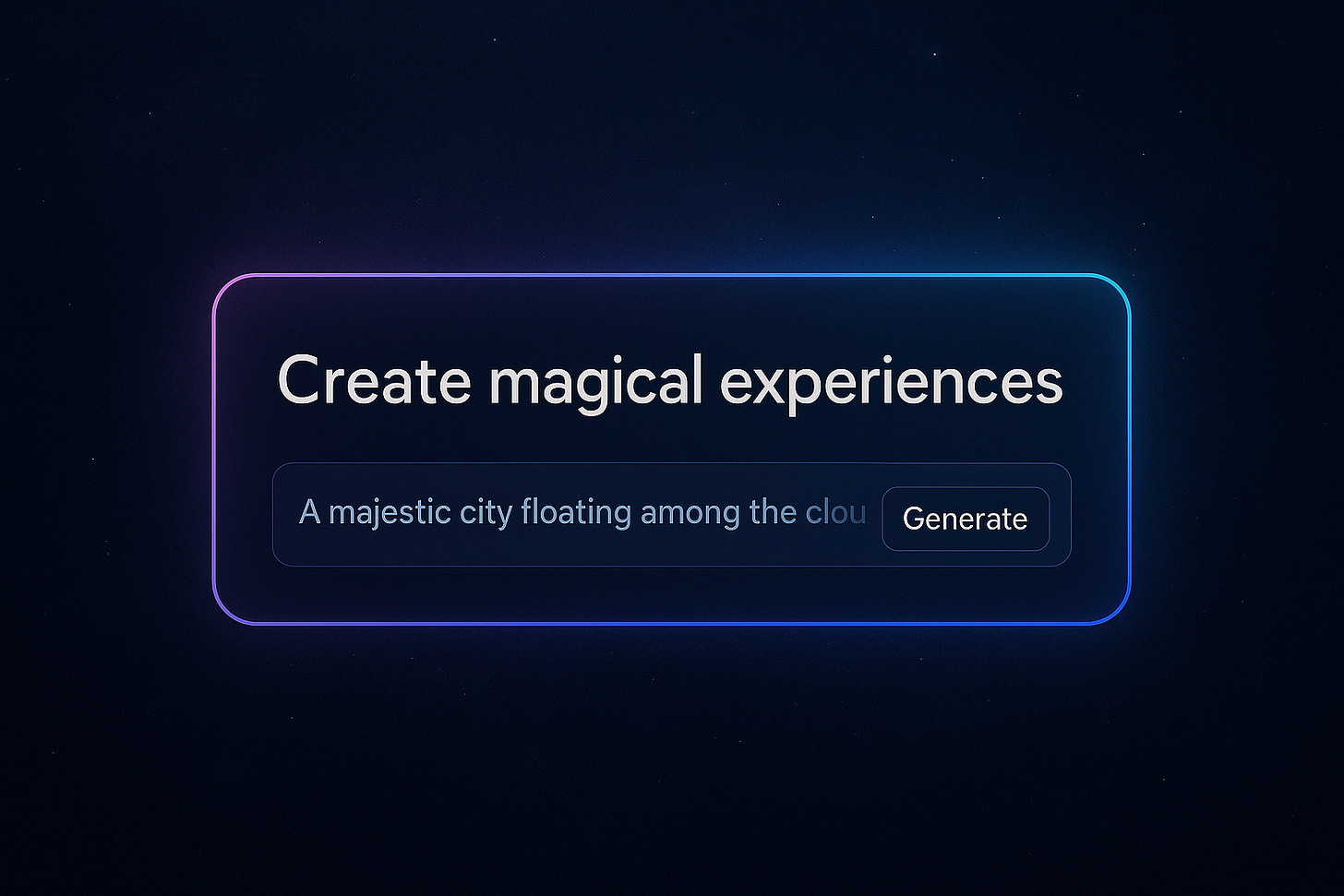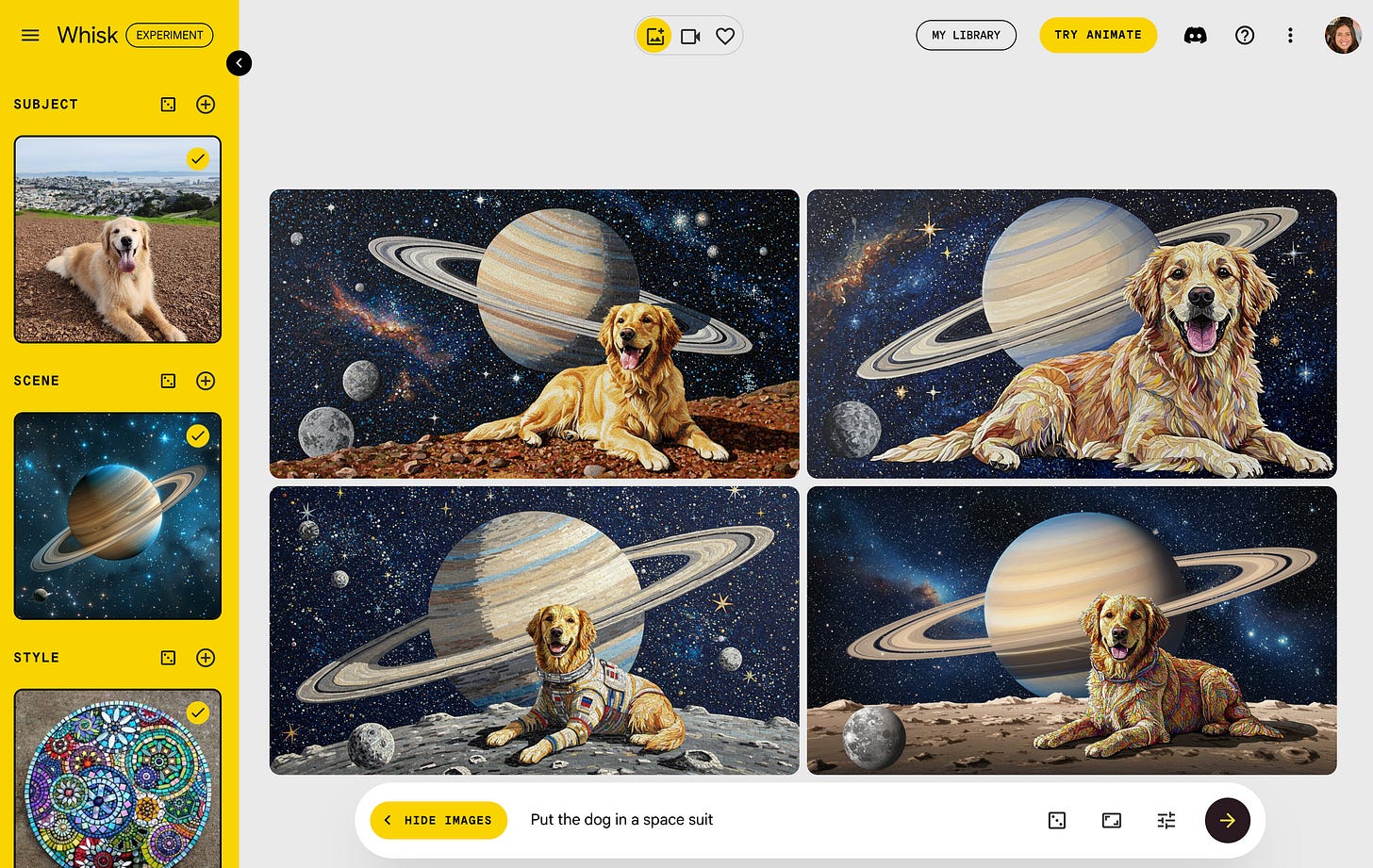Why AI tools need to do more than just offer a prompt box – they need to inspire.
Context Isn't Enough: Sparking Creativity in the Age of AI
A fascinating collision is happening right now: AI's power to process vast, expanding context and its increasing ability to act on that information are highlighting a critical need – boundless human creativity to imagine the magical 'something' these tools can actually build. We're making huge strides on the first part – gathering, organizing, and accessing massive amounts of information feels increasingly solvable. It’s a mix of technical infrastructure, AI breakthroughs, and thoughtful product design.
But unlocking the second part, boundless creativity? That’s the real frontier. It’s not just a systems problem; it’s a profoundly human one. It's about designing experiences that invite play, exploration, and those delightful, unexpected "aha!" moments.
The reality is, simply having access to powerful tools isn't enough if we don't know what to build or create with them. Vast context alone doesn't create magic; it's what we do with that context – how we frame it, remix it, dream with it – that truly matters.
The New Power... and the Creative Muscle Gap
One of the most exciting promises of AI is its potential to empower more people to build things – people who previously lacked the technical skills or resources. This democratization of creation is incredibly exciting!
But there's a subtle challenge emerging. When you've spent your life not being able to build something easily, and suddenly you're handed tools that make almost anything possible, you face a paradox of choice. The technical barriers are lower, but the question becomes: what should I build?
Building something truly novel requires the creativity to imagine it first. For many newly empowered creators, that creative muscle might not be fully developed simply because it hasn't been exercised regularly. This isn't a criticism; it's an observation about the importance of designing products and experiences that actively evoke imagination and creativity, especially for users stepping into these powerful new capabilities for the first time.
Exhibit A: The Tyranny of the Empty Prompt Box
This challenge is perfectly illustrated by the "empty prompt box" phenomenon. We've all stared at that blinking cursor, haven't we? There’s a reason most AI products don't just present a blank slate. They offer suggested prompts, example galleries, and starting points.
These aren't just helpful hints; they are crucial scaffolding to show what's possible and ignite a user's own ideas.
How We Try to Spark Ideas Today (The Usual Suspects)
Looking across various AI tools, a few common patterns emerge for trying to bridge this creativity gap:
Galleries: Collections of impressive outputs (images, text, code) meant to inspire users to try creating their own thing. These can be curated by the company or community-driven.
Ex. Demo Apps, What the Community MadeExample Prompts ("As Is"): Ready-to-use prompts that demonstrate a core function and kick off an interaction immediately.
Ex. “A social media feed with posts, likes, comments and infinite scroll. Include a stories feature at the top like Instagram. Just the UI first, I'll add Supabase for the backend later.”Example Prompt "Starters": The beginning of a prompt that the user completes, lowering the barrier to their first interaction.
Ex. “Summarize…”Example Prompt "Templates": Complete prompts with highlighted sections, suggesting specific places for users to easily customize and make it their own.
Ex. “Maker me [a website] for [online shoppers] that helps [connect with others who share their interests]”
These methods are helpful, but they mostly focus on variations of prompt suggestions. Are there better, more integrated ways to inspire?
When the Product Provides the Spark
Some experiences cleverly weave creativity directly into the product, shifting the burden away from the user.
NotebookLM's Audio Overview: This NotebookLM feature is fascinating. Users provide the context (their uploaded source documents). But the creative leap – turning that context into a structured audio discussion between two “podcast hosts” – comes from a sophisticated prompting technique developed by the NotebookLM team. The user benefits from this built-in creativity without having to (i) think of the idea, and (ii) know how to craft the complex "how-to" prompt themselves.
Whisk (Image Transformation): Similarly, Whisk lets users bring their own images to provide the context. The product then applies delightful transformations (sticker style, enamel pin, etc.). Again, the user doesn’t need to think about what they want to do (the product is opinionated about that in its positioning) nor do they need to know what underlying prompts to write that drive towards these specific, creative transformations (these were crafted by the “product team”, offering users pre-packaged creative magic).
These examples highlight a key distinction:
End-user products like NotebookLM and Whisk often embed the creative "magic" via sophisticated, pre-built prompts, positioned as features or experiences, requiring users mainly to provide context.
"Builder" tools and platforms (like Google AI Studio, Vercel's v0, Lovable, and Cove) place more of the creative onus on the user to define the what (the app, the specific use case) and often the how (the detailed prompt). Inspiration here still largely relies on those prompt suggestion patterns.
What's Next? Beyond Prompting to Build
Creativity is difficult. It's a muscle that needs development. For many, AI is providing the opportunity to exercise it in new ways, but the tools themselves need to evolve beyond just offering a powerful engine and a blank text box.
The products that succeed won't just provide infinite context and powerful models; they will find novel, intuitive ways to spark that initial creative idea and guide users toward making something amazing. Current methods like prompt suggestions are just the beginning.
I’m genuinely curious and excited to see what new interaction models and design patterns emerge. How can we build tools that don't just enable anyone to build, but actively inspire them, too?








